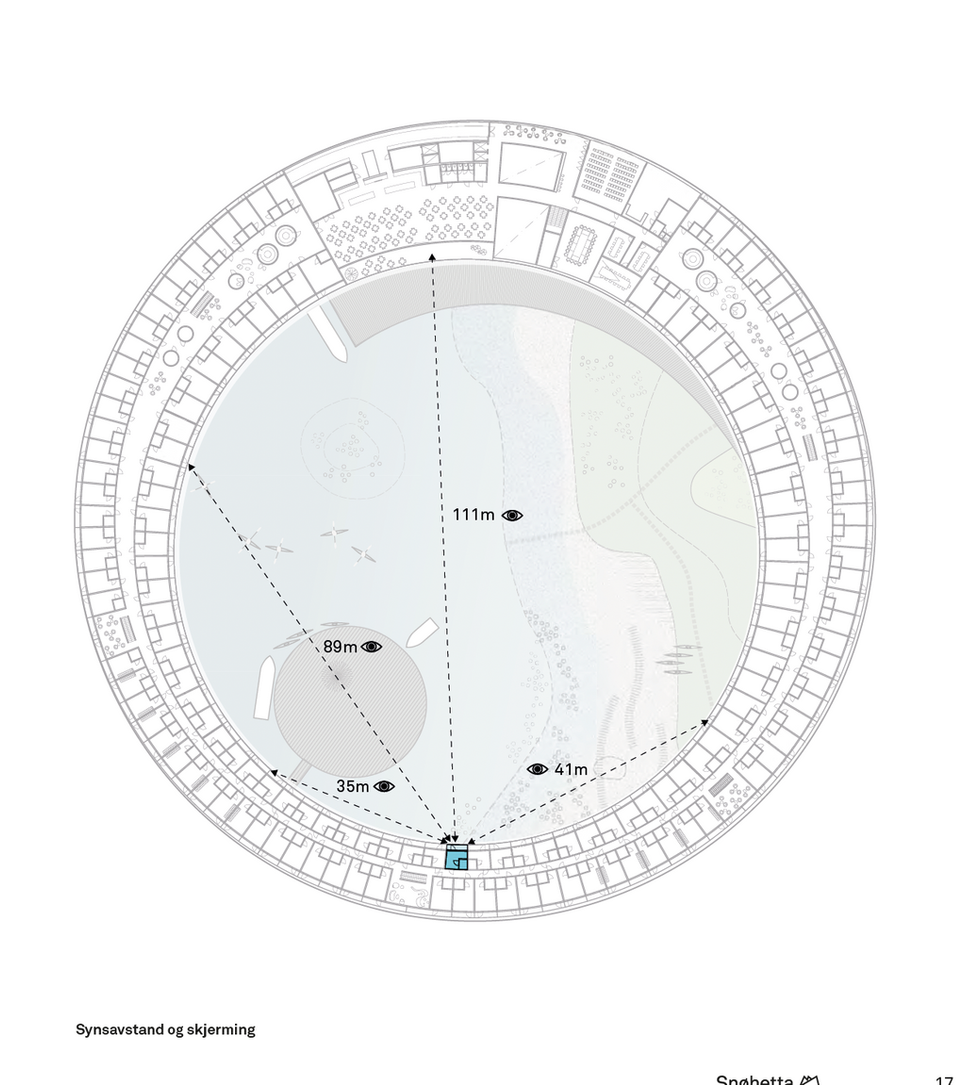
How we vision it
SNØHETTA
The name “Svart”, meaning "black" in Norwegian, is a direct tribute to the deep blue ice of Svartisen and the Svartisen name. As the word "black" and "blue" are the same in Old Norse, the name is a reference to the natural heritage of Svartisen, its precious glacier, and its natural surroundings.
In collaboration with Arctic Adventures of Norway, Asplan Viak, and Skanska, Snøhetta has developed a concept design for Svart with the ambition to be the world’s first Powerhouse hotel, situated at the foot of the Svartisen glacier in the Meløy municipality of northern Norway, just above the Arctic Circle.
Svart aims to be the first building constructed to the energy-positive Powerhouse standard in a northern climate. It not only aims to reduce its yearly energy consumption by approximately 85% compared to a modern hotel but also produces its energy—a necessity in this precious arctic environment.
Snøhetta completed its work on the Svart project in 2019. We are committed to raising the bar for sustainability across all industries and will continue to develop concepts that adhere to the energy-positive powerhouse standards wherever possible.
Building in such a precious environment comes with some clear obligations in terms of preserving the natural beauty and the fauna and flora of the site. We need to design a sustainable building that will leave a minimal environmental footprint on this beautiful Northern nature. Building an energy-positive and low-impact hotel is an essential factor in creating a sustainable tourist destination respecting the unique features of the plot; the rare plant species, the clean waters, and the blue ice of the Svartisen glacier.
The circular body of “Svart” extends from the shoreline by the foot of the Almlifjellet mountain and into the clear waters of the Holandsfjorden fjord. The circular shape provides a panoramic view of the fjord and an experience of living in proximity to nature.
The construction is inspired by local vernacular architecture in the form of the “fiskehjell” (An a-shaped wooden structure for drying fish) and the “rorbue” (a traditional type of seasonal house used by fishermen). The rorbue reference translates into the hotel’s supporting structure which is built from weather-resistant wooden poles stretching several meters below the surface of the fjord. The poles ensure that the building physically places a minimal footprint in the pristine nature, and gives the building an almost transparent appearance.














